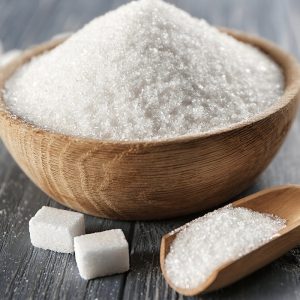Ethanol
Ethanol fuel is widely used in Brazil and in the United States, and together both countries were responsible for 87.1% of the world’s ethanol fuel production in 2011. Most cars on the road today in the U.S. can run on blends of up to 10% ethanol, and ethanol represented 10% of the U.S. gasoline fuel supply in 2011. Since 1976 the Brazilian government has made it mandatory to blend ethanol with gasoline, and since 2007 the legal blend is around 25% ethanol and 75% gasoline (E25). By December 2011 Brazil had a fleet of 14.8 million flex-fuel automobiles and light trucks and 1.5 million flex-fuel motorcycles that regularly use neat ethanol fuel (known as E100).
Description
Bioethanol is a form of renewable energy that can be produced from agricultural feedstocks. It can be made from very common crops such as sugar cane, potato, manioc and corn. There has been considerable debate about how useful bioethanol will be in replacing gasoline. Concerns about its production and use relate to increased food prices due to the large amount of arable land required for crops, as well as the energy and pollution balance of the whole cycle of ethanol production, especially from corn. Recent developments with cellulosic ethanol production and commercialization may allay some of these concerns.
Cellulosic ethanol offers promise because cellulose fibers, a major and universal component in plant cells walls, can be used to produce ethanol. According to the International Energy Agency, cellulosic ethanol could allow ethanol fuels to play a much bigger role in the future than previously thought.
Ethanol fuel is widely used in Brazil and in the United States, and together both countries were responsible for 87.1% of the world’s ethanol fuel production in 2011. Most cars on the road today in the U.S. can run on blends of up to 10% ethanol, and ethanol represented 10% of the U.S. gasoline fuel supply in 2011. Since 1976 the Brazilian government has made it mandatory to blend ethanol with gasoline, and since 2007 the legal blend is around 25% ethanol and 75% gasoline (E25). By December 2011 Brazil had a fleet of 14.8 million flex-fuel automobiles and light trucks and 1.5 million flex-fuel motorcycles that regularly use neat ethanol fuel (known as E100).
Bioethanol is a form of renewable energy that can be produced from agricultural feedstocks. It can be made from very common crops such as sugar cane, potato, manioc and corn. There has been considerable debate about how useful bioethanol will be in replacing gasoline. Concerns about its production and use relate to increased food prices due to the large amount of arable land required for crops, as well as the energy and pollution balance of the whole cycle of ethanol production, especially from corn. Recent developments with cellulosic ethanol production and commercialization may allay some of these concerns.
Cellulosic ethanol offers promise because cellulose fibers, a major and universal component in plant cells walls, can be used to produce ethanol. According to the International Energy Agency, cellulosic ethanol could allow ethanol fuels to play a much bigger role in the future than previously thought.
PRODUCTION PROCESS
The basic steps for large scale production of ethanol are: microbial (yeast) fermentation of sugars, distillation, dehydration . Prior to fermentation, some crops require saccharification or hydrolysis of carbohydrates such as cellulose and starch into sugars. Saccharification of cellulose is called cellulolysis . Enzymes are used to convert starch into sugar.







